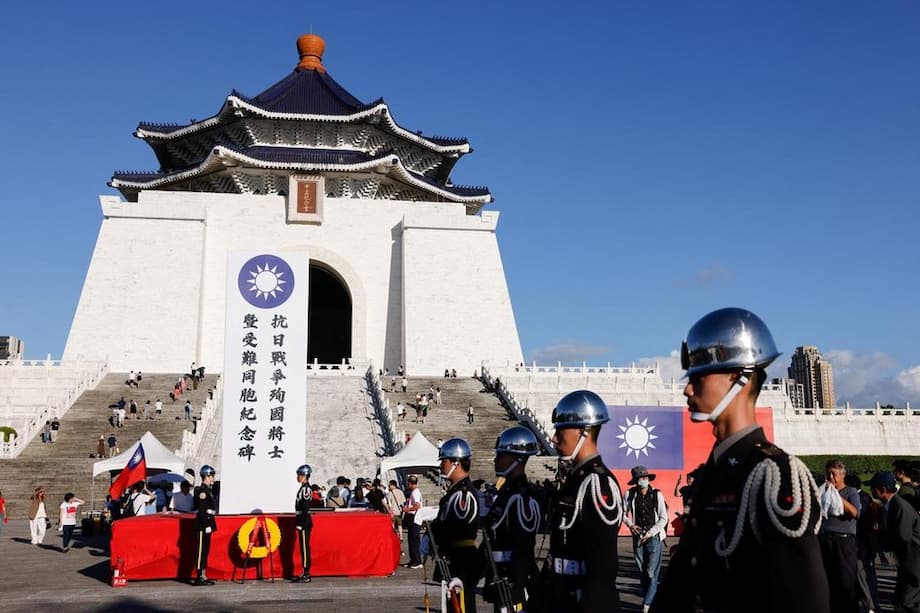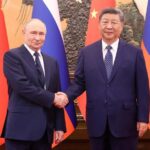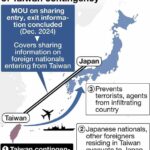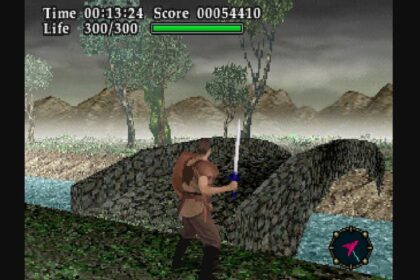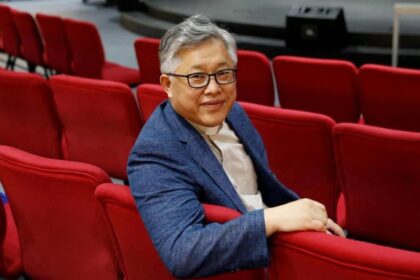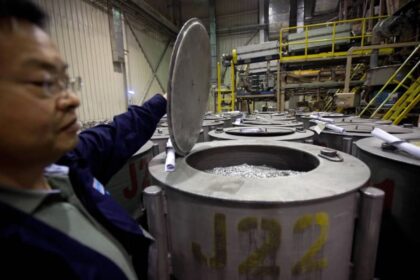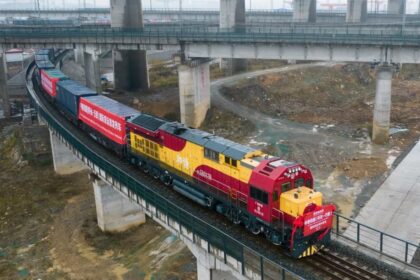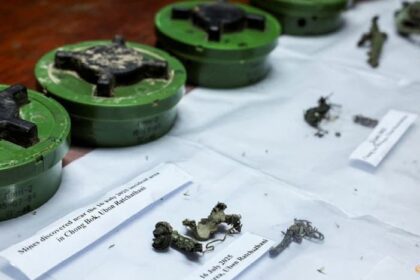Why the WWII memory fight matters now
As Beijing prepares a grand military parade to mark the eightieth anniversary of Japan’s surrender, Taiwan is mounting low key commemorations that make a very different point. Each side is trying to fix in place a version of World War II that supports its political claims today. In Taiwan’s telling, the Republic of China government led and won the war against Japan as part of the Allied coalition, long before the People’s Republic of China existed. In Beijing’s story, the Communist Party and the broader Chinese nation were the backbone of resistance, and the victory belongs to all Chinese, including people in Taiwan.
The timing is not accidental. Taiwan’s President Lai Ching te will host diplomats in Taipei and, for the first time, formally mark the end of the war in Europe. His message is aimed at the present as much as the past. He plans to stress that aggression fails and that democracies need unity as they confront coercion, disinformation and military intimidation. The setting is symbolic too, at the Taipei Guest House, once the residence of the Japanese governor general during colonial rule that ended in 1945.
China’s government has pushed back hard on Taiwan’s framing, accusing Taipei of manipulating history for political ends. Asked about Taiwan’s planned events and interpretation of the war, China’s foreign ministry dismissed Taipei’s approach as a political ploy.
In a statement summarized by Reuters, the ministry said that distorting history serves Taiwan’s ruling party, and that true commemoration lies in unification and national revival. The cross strait argument will play out as Chinese President Xi Jinping hosts foreign leaders for Beijing’s parade, and as Russia stages its own commemoration in Moscow with Xi expected to attend. The competing ceremonies underscore that this memory fight is also about influence and alignment in today’s strategic landscape.
Two governments, one war, different stories
The historical baseline is clear. When Japan invaded China in full force in 1937, the internationally recognized Chinese government was the Republic of China led by Chiang Kai shek and his Nationalist Party (KMT). The Nationalists and Chinese Communists formed a fragile united front against Japan. They fought the same occupier, often in different ways, while watching each other for an eventual power struggle. After Japan’s surrender in 1945, the civil war resumed. Mao Zedong’s Communists defeated the Nationalists, who moved the Republic of China government to Taiwan in 1949, where it remains Taiwan’s formal name.
Historians widely agree that the Nationalist armies shouldered most conventional battles against Japan. The Communist forces engaged mainly in guerrilla warfare in north and central China. Chinese suffering was immense, with at least 20 million deaths tied to the war. These facts leave room for debate on emphasis, and each side chooses the emphasis that supports its current legitimacy.
Who fought the major battles
The Nationalist army fought in Shanghai, Wuhan and Changsha, trading ground for time and tying down hundreds of thousands of Japanese troops who might otherwise have pushed deeper into Southeast Asia or the Pacific. The American Volunteer Group, known as the Flying Tigers, flew under Republic of China command and became a cornerstone of wartime cooperation with the United States. Communist units, including the Eighth Route Army and New Fourth Army, focused on guerrilla operations that harassed Japanese lines and built political support in the countryside.
Chiu Chui cheng, head of Taiwan’s Mainland Affairs Council, argues that today’s Communist narrative reverses that reality. He says the timeline itself shows the problem, since the People’s Republic of China was not founded until 1949.
During the Republic of China war of resistance against Japan, the People’s Republic of China did not exist. The Chinese communist regime has distorted facts by claiming it led the resistance.
Taiwan’s council has long contended that the wartime strategy of the Communists focused on building their own strength first, confronting the Nationalists second, and opposing Japan third. The Chinese Communist Party denies that claim, pointing to sabotage operations, intelligence networks, and local uprisings that disrupted Japanese control. The historical record contains examples that fuel both views, but the scale and cost of Nationalist conventional battles remain central to most academic accounts.
When did the war begin, eight years or fourteen
Even the start date is contested. Beijing teaches that the Sino Japanese War lasted fourteen years beginning with the 1931 Mukden Incident in Manchuria. Many Taiwanese references call it an eight year war, starting with the 1937 Marco Polo Bridge clash that escalated into full scale invasion. Li Fu chung, a Taiwan history scholar at National Chengchi University, notes that he would not dispute tracing the conflict back to 1931 because fighting and occupation had already begun, while also stressing that the Nationalist government of the Republic of China was the main force resisting Japan across the wider war.
Commemorations and messaging today
China’s parade is designed to impress. Reports describe more than ten thousand soldiers, hundreds of tanks, new missiles, swarms of drones and even experimental robots, with heavy emphasis on domestically produced systems. The spectacle follows high level summits where Beijing presented itself as the pillar of an alternative world order. For China’s leadership, linking military modernization to a triumphant World War II narrative is a way to cast the Communist Party as the custodian of national revival and rightful sovereignty.
That drive builds on years of work to shape a preferred version of wartime history. At a 2015 Politburo study session, Xi called for organized research, preservation of records and a “correct view” of the war that places the party at the center of victory.
We should let history talk and use historical facts to speak.
On the island, Taiwan’s commemorations have a different tone. A Defense Ministry concert featured performers in Republic of China uniforms and images of the Flying Tigers. Taiwan’s government has urged people not to attend Beijing’s parade, warning that participation would feed claims that Taiwan is part of the People’s Republic of China. Most parties in Taiwan have declined invitations. A few opposition figures have chosen to go, drawing criticism at home and applause in Chinese state media.
President Lai’s program adds another layer. He is framing the eightieth anniversary as a lesson about resisting coercion and standing with other democracies. Taiwan has stepped up outreach to Europe, and Lai is expected to court foreign support as he marks the end of the war in Europe for the first time in Taiwan. The message is aimed at present day alliances, not at revisiting every chapter of wartime history.
The legal and diplomatic stakes
The memory war has legal echoes. Beijing asserts it is the sole successor to the Republic of China and that Taiwan is part of its territory. Taipei rejects that, pointing out that no postwar agreement handed Taiwan to the Communist Party run state created in 1949. Taiwan notes that it still bears the name Republic of China, maintains formal ties with a small group of countries, and that its passports are widely recognized for travel.
Two documents often surface in these debates. The 1943 Cairo Declaration, a wartime press statement by the leaders of the United States, Britain and China (then the Republic of China), said territories taken by Japan, including Taiwan and the Pescadores, would be returned to China after victory. Taiwanese scholars counter that it referenced the Republic of China and that as a press statement it did not by itself settle postwar sovereignty. The 1971 United Nations General Assembly Resolution 2758 transferred China’s seat at the UN from the Republic of China to the People’s Republic of China. It resolved representation, not the status of Taiwan. Beijing cites both documents to support its One China position. Taiwan argues that neither resolves Taiwan’s status under contemporary international law.
History on screen and in classrooms
Public memory is shaped as much by culture as by documents. China’s summer box office hit Dead to Rights, set during the 1937 Nanjing Massacre, has earned hundreds of millions of dollars and drawn packed audiences. Films like this are part of a state supported wave that memorializes the War of Resistance against Japan. They honor those who suffered and fought, while reinforcing a narrative where the Communist Party stands as the war’s central protagonist.
That message is reinforced in textbooks, museum exhibits and battlefield reenactments. For many young people in China, the war is a living chapter of national identity, presented as the foundation for the country’s current strength and global status. In Taiwan, memory is more fragmented. The KMT highlights its wartime sacrifices and the legacy of Allied partnership. The ruling Democratic Progressive Party accents a civic Taiwanese identity and places today’s struggle for self government above past claims of Chinese unity.
Across East Asia, approaches diverge. In Japan, official speeches are carefully worded and public opinion remains divided on how to characterize the Pacific War. In the United States, the Asian theater often receives less attention in public discourse than the European front. These gaps in public memory help explain why audiences in each place respond differently to events tied to the eightieth anniversary.
Security backdrop in 2025
The memory contest unfolds amid steady military pressure around Taiwan. Chinese fighter jets and navy ships operate frequently near the island, and large scale drills have rehearsed blockades and strikes. Taiwan calls the security environment the most severe in decades. The anniversary rhetoric, on both sides, plays into deterrence and alliance building as leaders try to rally domestic audiences and foreign partners.
Speaking to Taiwan’s defense officers on the eve of Beijing’s parade, President Lai used the wartime anniversary to signal resolve.
Aggression will inevitably fail.
Taiwan’s government has warned public figures not to attend Beijing’s parade. The move drew anger from China’s Taiwan Affairs Office and criticism in state media, which accuse Taipei of denying the Communist Party’s role in the war. A small number of opposition figures have chosen to attend, while most parties and veterans organizations have kept their distance.
A veteran’s memory and a generation’s divide
For those who fought, the argument can feel personal. In Taipei, 99 year old Pan Cheng fa recalled facing the Japanese as a soldier of the Republic of China. He bristled at the suggestion that Communist forces led the resistance. He remembered that Nationalist units armed Communist fighters during parts of the united front, a policy he now believes only strengthened a rival that later turned its guns on the Republic of China during the civil war. He says relatives who stayed behind in the mainland suffered after 1949, while he escaped to Taiwan. Beijing’s parade, he added, has nothing to do with his war.
I cannot say anything good about the communists.
Pan’s story captures how living memory and political identity intersect. Many veterans remember the US and British alliance, the Flying Tigers and the Nationalist flag at Allied conferences. Others in Taiwan point to wartime abuses by the KMT and the island’s complex experience at the end of Japanese rule. In China, the party’s stewardship of memory dominates the public space. Eight decades on, the same war still speaks different languages on opposite sides of the strait.
Key Points
- Beijing and Taipei are using the eightieth anniversary of World War II to advance opposing historical narratives that support current political goals.
- During the war, the Republic of China government led by Chiang Kai shek was internationally recognized and fought most conventional battles against Japan, while Communist forces waged guerrilla warfare.
- China promotes a fourteen year timeline that begins in 1931, while many in Taiwan use an eight year frame starting in 1937.
- President Lai Ching te will, for the first time in Taiwan, formally mark the end of the war in Europe and urge unity among democracies against coercion.
- China’s parade showcases new weaponry and frames the Communist Party as the backbone of wartime victory and national rejuvenation.
- Taiwan’s government says no postwar agreement handed Taiwan to the People’s Republic of China, and that UN Resolution 2758 addressed representation, not sovereignty.
- Popular culture in China, including the hit film Dead to Rights, reinforces a party centered memory of the war, while Taiwan’s commemorations highlight the Republic of China role.
- Cross strait tensions continue, with frequent Chinese military activity near Taiwan and Taipei warning public figures not to attend Beijing’s parade.


